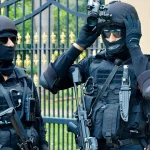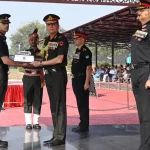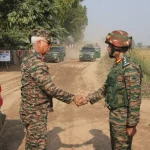The significance of the Indian Army’s recruitment system cannot be overstated. As the backbone of national security, the military must constantly evolve and adapt to meet contemporary challenges. In line with this goal, the Agnipath scheme was introduced to modernize the recruitment process and inject fresh talent into the Indian Army. The **Agniveer Selection Process for 2025** represents a significant shift towards a more dynamic and agile approach to military service. With the aim of selecting young, dedicated candidates for a four-year term, this selection process combines rigorous testing with a focus on mental and physical resilience.
Historical Context
To understand the Agniveer selection process, it is essential to appreciate the historical evolution of military recruitment in India. Traditionally, recruitment into the Indian Army has been a lengthy and complex process, often culminating in several months of training before soldiers were integrated into active service. In an era where technological advancements and rapid geopolitical changes occur, the Indian Army recognized the need for a more effective recruitment model. The Agnipath scheme not only addresses these challenges but also aligns with broader motivations, including enhancing operational readiness, fostering youth engagement, and providing an opportunity for young individuals to serve the nation in a condensed timeframe.
Main Sections
Phase 1: Online Written Test / Common Entrance Exam (CEE)
The selection process begins with the **Common Entrance Exam (CEE)**. This step is crucial as it determines the candidates’ knowledge base and readiness to advance to subsequent phases.
- Exam Structure:
- The CEE is conducted either online or offline and typically consists of 50 or 100 questions, depending on the specific posts.
- Subjects covered include General Knowledge, Mathematics, and Logical Reasoning, while technical roles entail additional subjects such as Physics, Chemistry, and English.
- Marking Scheme:
- The exam follows a negative marking system, meaning that incorrect answers lead to a deduction of points. This aspect emphasizes the importance of careful consideration before answering questions.
- Candidates must achieve qualifying marks tailored for their respective categories to progress to Phase 2 of the selection.
- Preparation Resources:
- Candidates are encouraged to utilize resources such as SSBCrack and SSBCrackExams, which provide comprehensive study materials, including books, online courses, and eBooks focused on preparing for the CEE.
Phase 2: Physical Fitness Test (PFT), Physical Measurement Test, Adaptability Test, and Medical Examination
After clearing the written examination, candidates must undergo a series of physical tests designed to assess their fitness and overall health.
- Physical Fitness Test (PFT):
- This test may include various exercises such as running, push-ups, and sit-ups, tailored to meet the Army’s physical standards.
- Candidates must demonstrate a specified level of endurance and strength to qualify.
- Physical Measurement Test:
- Height and weight are critical indicators of a candidate’s suitability. The standards vary based on the desired category and regional considerations.
- Adaptability Test:
- The adaptability test evaluates mental toughness and the ability to cope with the demanding nature of military life. This testing phase simulates real-world scenarios to assess candidates’ responses and adaptability.
- Medical Examination:
- Candidates undergo a thorough medical examination that includes tests for general fitness, eyesight, and other health parameters.
- Meeting these medical standards is non-negotiable, as the rigorous demands of army life require peak physical condition.
Final Merit List and Enrollment
Once candidates successfully clear all phases of the selection process, a final merit list is prepared.
- Merit List Preparation:
- This list ranks candidates based on their performance across all tests, including the written exam, physical assessments, and medical standards.
- Selected individuals, referred to as **Agniveers**, are then prepared for their onboarding into the army.
- Term of Service:
- Agniveers serve a term of four years during which they undergo training and engage in various army operations.
- After this period, the Army retains the option to enroll up to 25% of the Agniveers as regular soldiers based on organizational needs. This retention reflects the Army’s commitment to integrating capable individuals into its ranks permanently.
Key Eligibility Criteria for Candidates
To be considered for the Agniveer selection process, candidates must meet specific eligibility criteria:
- Age Requirement: Candidates should be aged between 17.5 to 21 years, which targets younger individuals eager to serve.
- Educational Qualification:
- For General Duty posts: Minimum Class 10th pass.
- For Technical posts: Must have passed Class 12th with Science subjects (Physics, Chemistry, Math).
- Marital Status: Only unmarried Indian males are eligible for the Agniveer selection process.
- Physical Standards: Candidates must adhere to prescribed height, weight, and medical standards set by the Indian Army.
Exam Specifics
Understanding the specifics of the examination process is crucial for candidates preparing to join the Indian Army.
- The written exam is designed to be rigorous, ensuring that only those with the best knowledge and problem-solving abilities advance.
- The subsequent physical assessments continue the competitive evaluation process, ensuring that candidates’ physical prowess aligns with the demands of military service.
Statistical Data and Research Insights
- Recruitment Impact:
- The Agnipath scheme aims to enhance the operational capabilities of the Indian Army by recruiting a significant number of youngsters each year. The goal is to infuse fresh talent, potentially leading to improved morale and effectiveness within the ranks.
- Reports indicate that the Indian Army aims to recruit around 60,000 Agniveers annually under the new plan, fundamentally altering the age profile of recruits.
- Youth Engagement:
- The initiative seeks to engage the youth of the nation – leveraging their energy while also offering them a chance to gain valuable life skills and training.
Challenges and Solutions
While the Agniveer selection process is progressive, it is not without challenges.
- Recruitment Communication: There is a need for effective communication to ensure potential candidates understand the new recruitment model and its benefits.
- Preparation Gaps: Many candidates may lack proper guidance in preparing for the rigorous tests. Establishing mentorship programs and accessible study materials can bridge these gaps.
- Physical and Mental Fitness: The transition from civilian life to military readiness can be daunting. Regular workshops and training camps can prepare candidates for this leap.
Future Trends and Predictions
As we move toward 2025 and beyond, the Agnipath scheme could reshape the Indian Army’s workforce deeply. Some trends to anticipate include:
- Focus on Technology: With advancements in military technology, the recruitment process will likely place a greater emphasis on technical skills, particularly concerning technical roles.
- Youth Feedback Loop: As the program matures, feedback from Agniveers could guide the continual improvement of the program, ensuring alignment with the evolving needs of the Army and its recruits.
Conclusion
The Indian Army Agniveer Selection Process for 2025 embodies a forward-thinking approach to military recruitment in India. With a systematic blend of academic evaluation, physical assessments, and comprehensive candidate evaluations, this model aims to select the best and brightest young individuals willing to serve the nation. By addressing challenges and embracing future trends, the Indian Army is poised to leverage the strengths of a youthful and dynamic force. As candidates consider this opportunity, resources like SSBCrack and SSBCrackExams can be invaluable in their preparation journey.
With its focus on young recruits, the Agnipath scheme not only strengthens national security but also provides a pathway for personal growth, skill development, and the pride of serving one’s country. For aspiring candidates, this is not just a recruitment process; it’s a call to honor, strength, and commitment to the motherland.












